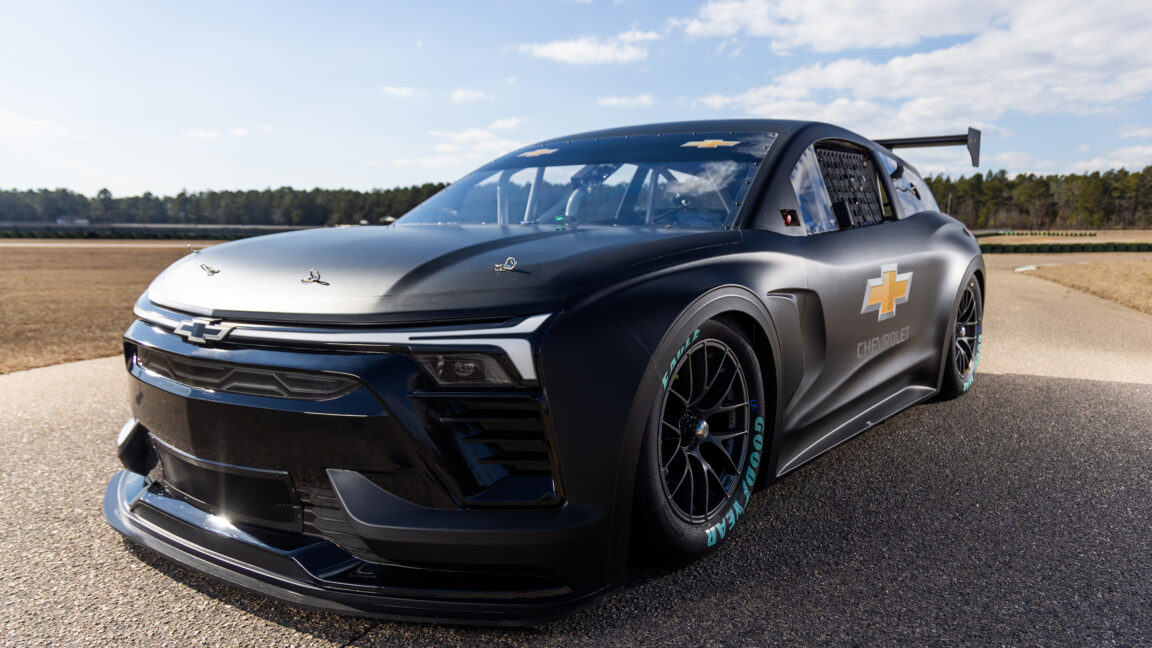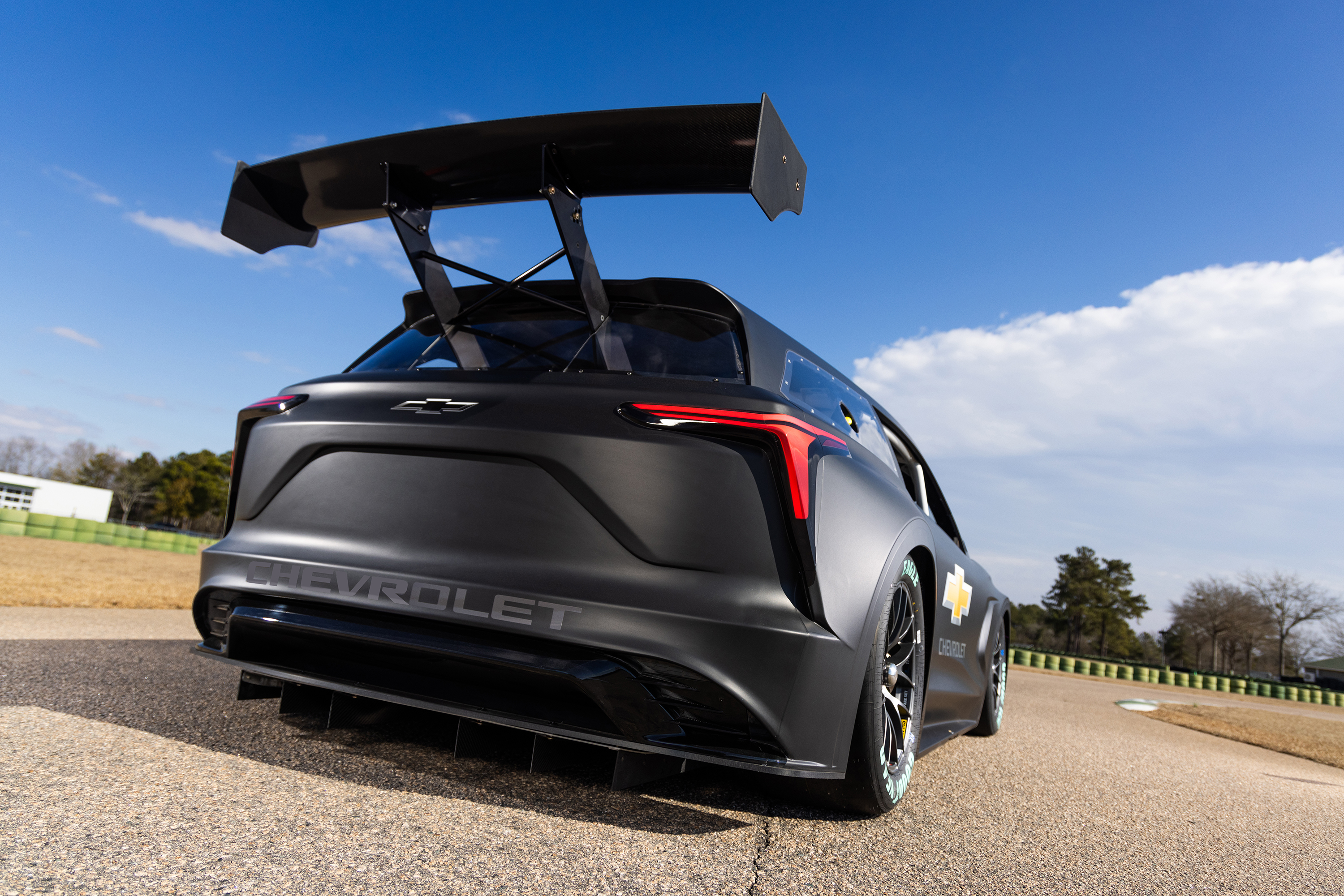
Credit: Chevrolet
CONCORD, N.C.—We weren't allowed cameras past the lobby of General Motors' shiny new Charlotte Technical Center. It's the automaker's new motorsport hub in the heart of NASCAR country, but the 130,000-square-foot (12,000 m2) facility is for much more than just stock cars. There are cutting-edge driver-in-the-loop simulators, shaker rigs for punishing suspension, and even an entire gym for drivers to work on their fitness.
It's also home to GM's racing command centers—conference rooms with walls of monitors where engineers and strategists provide remote support for GM's teams at their respective racetracks. It's pretty busy most weekends; this Saturday and Sunday, Chevrolet is racing in both IndyCar (in Alabama) and NASCAR (in Texas), next week, it's Chevrolet and Cadillac in Belgium for the World Endurance Championship and Northern California for IMSA, plus NASCAR in Kansas. Starting next year, F1's 24 races a year will be added to the mix as well.
The technical center had been sanitized before our group of journalists arrived, perhaps rendering the camera ban moot anyway. The smells, on the other hand, were intriguing—solvents, 3D printers, some other rapid prototyping, or maybe all of it all at once. If only websites were scratch and sniff.
The person with overall responsibility for it all is Ken Morris, whose full title stretches to senior vice president of product programs, product safety, and motorsports. The last of those items in his portfolio is almost certainly less important to GM than new products or those products being safe, but that doesn't mean it doesn't have real benefits. The days of a widget being tested on a race car and then fitted to road cars shortly afterward are mostly an artifact of the past, but there are other ways that motorsport programs make for better vehicles for the rest of us.
A car that handles well is a better car
"I love the sport of it, of course, but I really love watching engineers develop over time and learn how to improve, improve, improve," Morris told me. "I think it's not a given that a vehicle is really well integrated, from not only the tuning of the car, which is important, but body structure, torsional stiffness, all those kind of things are so important. And if the engineers don't have the right kind of backgrounds or right mentality, those things can get ignored, and it shows up in the end," he said.
The late Richard Parry-Jones, who rose to CTO over at rival Ford, had a similar take: vehicle dynamics matter.
"There are people that think no one can tell the difference, you know, and I've always said they absolutely can tell the difference. They don't know what it is. And the structural feel of the car going down the road, you know, people might explain, 'It feels like a vault.' Well, I can tell you exactly what's going on, physically, from the parts and the tuning, and it's an outcome that we strive for," Morris said.
Does it need to be electrified?
The addition of electrified powertrains has certainly been one of the biggest trends in motorsport over the past decade or so. Since F1 made hybrids mandatory in 2014, we've also seen hybridization come to IMSA and WEC's prototypes, and most recently, IndyCar added a supercapacitor-based system. But it hasn't been a one-way street; this year, both the World Rally Championship and the British Touring Car Championship have abandoned the hybrid systems they adopted just a few years ago.
Win on Sunday, sell on Monday, like concrete tech transfer, is much less of a thing in the early 21st century, but marketing remains a central reason for OEM involvement in the sport. I asked Morris if Cadillac would be endurance racing with the V-Series R if the LMdh ruleset didn't require a hybrid system.
"I think it's an interesting discussion because you know, current EVs—the development [needed] where you can really do lapping at the Nürburgring or lapping full laps and not one hot lap, then you're done, there's just going to have to be development, development iteration, iteration, and that's what racing is," Morris said.
While the mechanical specifications of the hybrid Cadillac (and its rivals) are locked down, software development is unfettered, and Morris is not the first competitor to tell me how important that development path is now. Battery cell chemistries and battery cooling are also very active research areas and will only get more important once Cadillac enters F1. At first, that will be with Ferrari engines in the back, but starting in 2029, the Cadillac team will use a powertrain designed in-house.

Don't expect all-electric NASCAR racing any time soon, but BEVs might provide a support race in the future.
Credit: Chevrolet
In the lobby of the Technical Center were a pair of Chevy's Blazer EV.R NASCAR prototypes. But as we've seen with Formula E, an entirely BEV-based series is a tough challenge at the best of times. And NASCAR races mostly on ovals, where there are no opportunities to regenerate braking energy back into the battery. GM, the other manufacturers, and NASCAR are working together to see where or how to add something electrified to the sport, possibly a support series.
"I selfishly really would like however it's set up to benefit our road cars, so that we really do get the technical benefit and technical payoff of the resources that were put into it. And, you know, I'd like it to be so that when we hire software engineers or battery engineers or drive unit engineers, they are working on something that will directly benefit when we want to do a full-blown [electric] track car," Morris told me.
AI is the new unfair advantage
Last summer, we looked at how GM has been using AI to improve its racing performance. That includes tools that monitor the radio feeds to predict cautions, an image analysis pipeline that can alert engineers to car damage seconds after the photographer snaps the shot trackside, and strategy suggestions like when to make that pit stop. Sadly, like the suspension settings on a race car, some things remain too much of a competitive advantage to discuss freely with journalists, and no one will tell me if they've created an AI agent that sussed out a quicker line around a track.
"I don't know if I can share some examples," Morris said. "I've got examples of things that we do that are fundamental, what we do analytically that would take four weeks, that will now take about four hours. And I mean, that's not BS, that's real... especially in the aerodynamics area, computational fluid dynamics, those kind of things. Aero is the one that has the most examples. But there's other places... And if you don't get in now, you're going to be way behind."

-
 C114 Communication Network
C114 Communication Network -
 Communication Home
Communication Home


